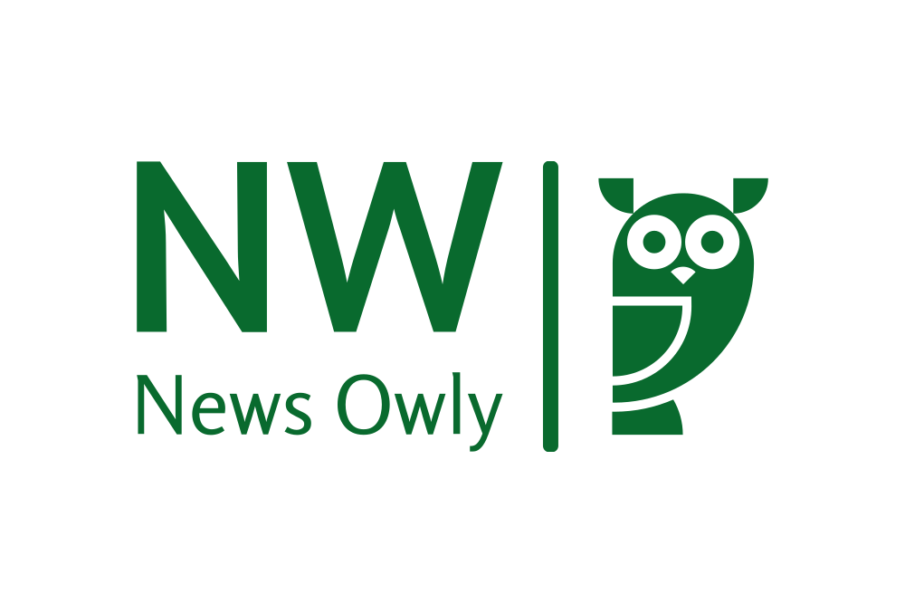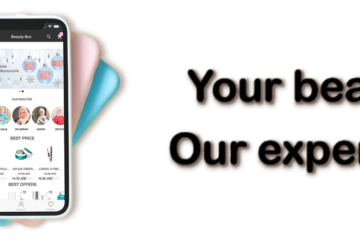Website Design: Essential Tips for a User-Friendly Interface

Website Design: Essential Tips for a User-Friendly Interface
A website’s design is a key component of a strong online marketing presence. A well-crafted site not only looks professional but also encourages customers to return by providing information that is clear, consistent, and easy to locate.
This article will cover essential methods and tools for enhancing website design. It will also explain the importance of top-tier website design and present examples from successful business websites.
Business Website Design Tips
Create a Plan for Your Website Layout
Start by forming a detailed plan. Identify your target audience and understand their journey on your site. This means gathering data on who your customers are, what they like, and how they interact with your site. Develop customer personas to pinpoint their demographics, problems, needs, and preferred channels for getting information.
Remove Unnecessary Elements
A modern web design is sleek and efficient. Get rid of any extra features that clutter your site:
- Complex animations
- Long-winded text
- Unnecessary stock images
- Promotional jargon like “next generation” or “innovative”
This helps ensure visitors can quickly find the information they need without having to wade through unnecessary content.
Add Social Media Buttons
Integrate buttons that link to your social media platforms such as Facebook, Twitter, LinkedIn, and Instagram. These buttons should be easy to find and ideally located in a footer that stays visible as users navigate your site. Including positive reviews, testimonials, awards, and endorsements can also build trust with your visitors.
Make Your Homepage Scrollable
A scrollable homepage is essential since many users access websites on tablets and mobile devices. This type of design can include engaging elements like animations that appear as users scroll. Divide the homepage into clear sections for about information, services, products, testimonials, case studies, resources, and contact details for easier navigation.
Utilize White Space
Don’t shy away from using white space—sections of a page left blank (the space can actually be any color). It helps break up the content, making it more readable. White space also gives you room to prioritize critical information and place other page elements strategically.
Optimize for Mobile Devices
Mobile users represent a large portion of web traffic. Ensure your website looks and functions well on smartphones and tablets. The design should respond to user needs effectively. Consider why mobile users are visiting your site and make sure the information they seek is easily accessible.
Implement an SEO Strategy
SEO is crucial for any website’s success and should be part of your initial design process. Focus on creating content that is valuable to your customers. Technical SEO tips include choosing a reliable web host, improving page load speeds, and fixing any crawl errors.
Prioritize Website Security
Customers need to feel their data is secure. Use measures like an up-to-date SSL certificate to protect transactions and data transfers. An SSL certificate enables HTTPS and the padlock icon in the search bar, signaling to users that your site is secure. Without this, search engines like Google may flag your site as unsafe.
These tips will help you create a functional, user-friendly business website.
What Makes a Great Business Website?
1. Simple Navigation for Business Websites
Visitors often come to a website with specific goals like finding contact information or product details. Clear navigation ensures they can find what they need without frustration. Using broad headings and related subtopics helps keep the layout straightforward. For websites with many pages, incorporating breadcrumb navigation alongside menus can make it easier for users to navigate back to main sections.
2. Responsive Design in Website Development
With more people accessing websites on smartphones and tablets, responsive web design is essential. A responsive website automatically adjusts its layout and functions across different devices, providing a positive user experience. Mobile-optimized sites also rank better in search engine results. Businesses can upgrade their sites to be responsive by choosing frameworks that allow layout adjustments and code modifications.
3. Consistent Branding Across Pages
For a cohesive and professional look, your website should maintain consistent branding through layout, typography, and color scheme on every page. This consistency helps users navigate and find information quickly. Having a style guide ensures all new pages or graphical elements fit seamlessly into the existing design, making the website look unified and polished.
4. Purposeful Use of Images and Videos
Visual elements like images and videos can engage visitors but should be used strategically. Overloading a page with unnecessary visuals can be overwhelming. Effective websites balance text with impactful visuals that support the content. Place images after text blocks to enhance understanding, and use videos like tutorials or testimonials to add value without clutter.
5. Strong and Clear Website Copy
The text on your site conveys important information to customers. Good copy should be well-written, error-free, and engaging. It should also be consistent with the brand’s voice across all pages. Avoid technical jargon and keep the language simple. This makes the content accessible to a wider audience and ensures it communicates the brand message effectively.
6. Calls to Action to Engage Users
Calls to action (CTAs) guide users toward completing specific actions like subscribing to a newsletter or making a purchase. Effective CTAs are clear, visually striking, and consistent with the website’s branding. Placing them strategically throughout the site encourages frequent user interaction and increases the likelihood of achieving desired outcomes.
7. Fast Page Load Speeds
A website’s load speed significantly impacts user behavior. Slow-loading pages can drive visitors away, whereas fast load times keep them engaged. Page speed also influences search engine rankings. Tools like Google’s PageSpeed Insights can help identify areas where the website’s speed can be improved. Additional techniques, like minimizing image file sizes and leveraging browser caching, can further enhance load times.
Using these principles can help create a business website that is user-friendly, visually appealing, and effective at achieving its goals. Consistent branding, mobile optimization, clear navigation, and strategic use of visual and textual elements all contribute to a superior user experience.
Why Business Website Design Is Important
Website design is a key component of modern business marketing. It is often the first place potential clients visit to learn about a company and its offerings. A strong website serves both the business and its visitors efficiently. For businesses, it should feature clear calls to action and convert website traffic into leads, clients, and customers. For visitors, it should provide straightforward answers to their questions or issues.
Key Reasons for Effective Web Design
- First Impressions Count When visitors land on a business website, they form an opinion within seconds. A well-designed, appealing website can ensure that this first impression is positive. On the other hand, a website that looks outdated or cluttered can deter potential customers.
- Enhances SEO The design of a website can significantly impact its search engine optimization (SEO). Elements within the website affect how search engines like Google rank it. Effective web design ensures that the site is easily crawlable and indexable by search engines. Additionally, the code should be optimized for SEO to help pages rank higher in search results.
- Reflects Customer Service Quality The design of a website sets the tone for how a business is perceived in terms of customer service. If the site is well-organized and visually appealing, customers are likely to associate this with high-quality service. On the contrary, a poorly designed website might give the impression that the business does not invest in customer satisfaction.
- Builds Trust Trust is essential, especially for online businesses. A professional, well-maintained website conveys legitimacy and reliability. If a website appears poorly designed or outdated, it can seem untrustworthy, compelling visitors to look for alternatives. This is crucial for businesses that require customers to provide sensitive information like payment details.
- Competitive Edge To stay competitive, businesses must have websites that are at par with or better than their competitors’. Potential clients will often compare websites, and a more attractive, user-friendly one can sway their decision. Businesses should take note of effective elements on competitors’ sites and incorporate similar features to remain competitive.
- Brand Consistency Consistent branding across various platforms is vital for building brand recognition. A business website plays a pivotal role in this. Uniform use of fonts, colors, and design elements across all pages helps establish a strong brand identity. This consistency helps users easily recognize and trust the brand.
Common Website Design Pitfalls
- Launching Incomplete Sites: Releasing a website before it is fully functional can leave a bad impression. Content, pages, and links should all be tested and confirmed to be working.
- Using Low-Quality Photos: High-quality visuals are crucial. Poor-quality images can make a site look unprofessional and drive visitors away.
- Broken Links: It’s important to ensure that all hyperlinks work correctly. Broken links can frustrate users and harm SEO rankings.
In conclusion, investing in professional web development and having a well-designed website is essential. It influences first impressions, aids in SEO, reflects customer service quality, builds trust, provides a competitive edge, and ensures brand consistency. Professionals with the right skills can make a significant difference in creating a site that benefits both the business and its clients.
Examples of Strong Business Website Designs
Apple
Apple excels at creating a clear and minimalist style on its website. The design is user-friendly and visually engaging, allowing visitors to easily find the information they need. A significant amount of white space ensures that visuals and text stand out, guiding the eye to key elements on each page. Apple’s site is known for its seamless navigation, cohesive style, and efficient layout, making it a leading example in digital design.
Christo NYC
Christo NYC, a hair salon in New York City, has a sleek and modern website that effectively showcases its brand. The site features high-quality images that enhance the overall aesthetic without overwhelming the user. The simple and easy-to-navigate design immediately directs visitors to book appointments and learn about services. Clear information flow and credible copy establish trust with potential clients.
HelloFresh
HelloFresh, a meal kit delivery service, presents an engaging and color-rich website. The homepage is vibrant, with clear sections and multiple calls to action. Visitors can find everything they need right from the homepage, including product details, subscription options, and FAQs. The consistent branding across the site, with uniform colors and fonts, makes for a cohesive and user-friendly experience. This well-organized design ensures that users can quickly find answers without extensive searching.
Gotham Greens
Gotham Greens, a company focused on growing and distributing greens, uses a modern and minimalist design on its website. The scrollable homepage contains clear, concise copy that informs visitors about the business’s mission and services. The one-page design is effective in presenting crucial information effortlessly, ensuring users do not need to navigate through multiple pages. This streamlined approach makes it easier for customers to understand what Gotham Greens offers and to find what they need quickly.
Top Website Design Tools
Wix
Wix is a popular choice for creating websites with ease. It provides a variety of free, customizable website templates which help users design unique and mobile-friendly sites. Business owners and marketers appreciate its simple drag-and-drop website builder, which makes it easy to create a polished website without needing extensive coding knowledge. Wix also has built-in SEO tools to help your site get found on search engines like Google.
Figma and Sketch
Figma and Sketch are powerful tools for web-based vector graphics editing and prototyping. These tools excel in creating detailed and responsive designs. They enable real-time collaboration, making it easy for teams to share files and provide feedback instantly. This helps produce pixel-perfect websites that stand out. By continuously updating their features, Figma and Sketch consistently support efficient and effective web development processes.
Canva
Canva is a versatile graphic design platform useful for creating various types of visual content, including website graphics. Canva offers both free and paid plans, with the premium options like Canva Pro providing additional functionalities. The platform is user-friendly, making it easy to design professional-looking graphics, logos, and social media content. It’s particularly advantageous for users without advanced design skills, offering a broad array of templates and tools.
Elementor
Elementor is a drag-and-drop website design tool specifically for WordPress users. It enables users to build and edit their sites effortlessly, regardless of their design experience. With features like a built-in responsive mode and style kits, Elementor helps create clean, professional web pages efficiently. This tool is highly valued for its ability to speed up website creation while allowing for robust, visually appealing designs.
Hotjar
Hotjar is a behavioral analytics tool that provides insights into user interactions on your website. It uses heat maps, session recordings, and surveys to show which parts of your site perform well and which need improvement. By analyzing this data, site owners can optimize their pages for better user engagement and conversion rates. Tools like Hotjar are essential for understanding how visitors use your site, helping to identify areas that need refinement.
Leave a reply
You must be logged in to post a comment.














